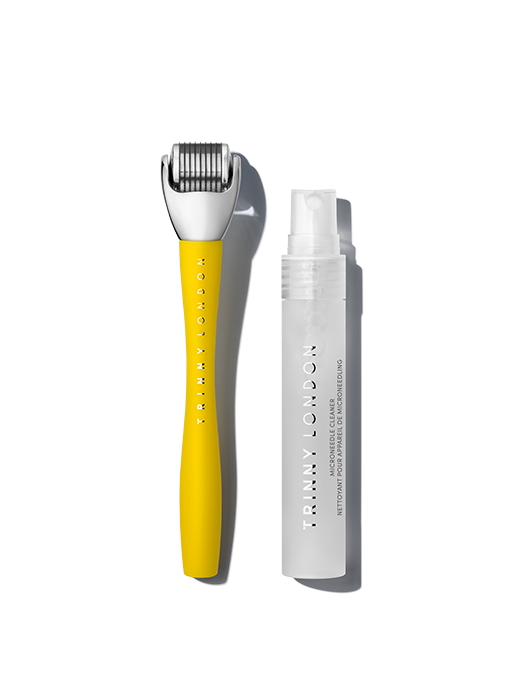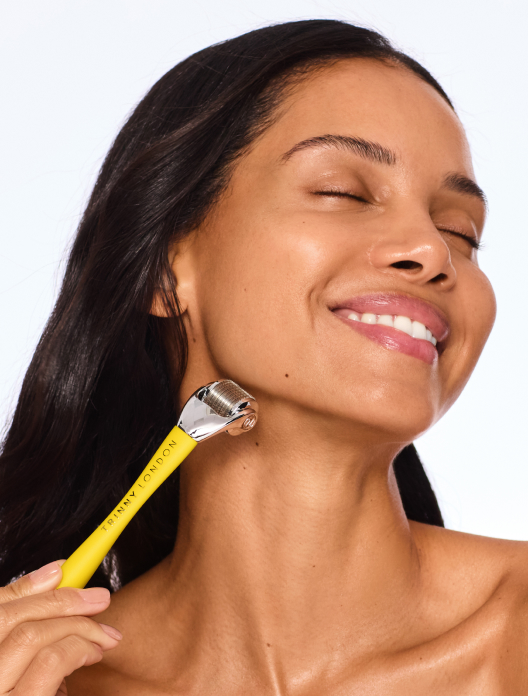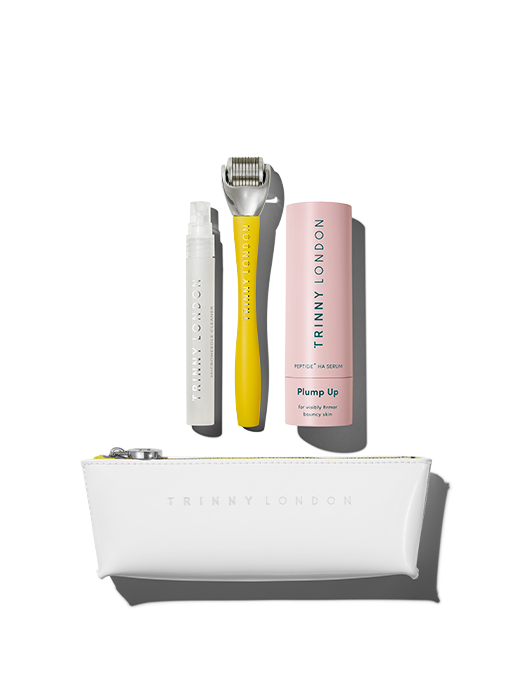

Plump Up Microneedle 0.3mm
At-home microneedle tool for glowing, plump skin
EU free standard delivery on orders over €150

Sophie is an award-winning singer and songwriter, known for her uplifting pop songs and successful podcast, Spinning Plates. She’s no stranger to the dancefloor, but she is a stranger to skincare tools.
“I’ve never tried anything,” explains Sophie, “I think I can count the number of facials I’ve had professionally on one hand. I’ve been quite timid”. The world of skincare and skincare tools has never been easy to navigate – and with hundreds of myths swirling around like gossip in a school playground, it’s no surprise that microneedling and treatments can seem confusing and something to shy away from. Got questions? We’ve got answers…
Microneedling involves using a roller wheel dotted with tiny needles to create microchannels on the surface of the skin – we’re talking less than a millimetre, think tiny pinpricks rather than punctures. But ‘how does that help?’ we hear you ask. These microchannels trigger your body’s natural healing process, sending a signal to your skin to produce more collagen and quickly seal up those teeny tiny pinpricks. This results in smoother, plumper, firmer skin – and all of that collagen helps with fine lines, wrinkles and pores.
There’s a lot of hesitation when it comes to microneedling at home – but fear not. As with all skincare and treatments, the golden rule is: always listen to your skin. Does it feel tingly or sensitive? Is it looking a little more red than usual? If so, it’s a good idea to skip your next microneedling session. If you’ve done something that may have angered your skin, such as waxing or going in a sauna, then hold off on microneedling until your skin has calmed down.
The needles on an at-home microneedle only target the very top layer of skin, this means they’re safe to use at home, compared to an in-salon microneedle where the needles are long enough to reach the dermis. Due to the longer length of needles (and the potential damage they can cause), it’s important these microneedles are only used by a professional.
As with all tools, it’s also important your microneedle is kept sparkling clean. This means thoroughly cleaning it after every use and storing it properly. We’d also recommend rinsing the head with warm water before every use.
We know how tempting it is to microneedle daily once you’ve seen the powerful results, but we really wouldn’t recommend it. It’s important to have rest days – no one’s skin can handle daily microneedling, not even long-term microneedlers. It’s important to allow your skin time to rest and recover, so we’d suggest waiting at least 24 hours before you consider another session. We’d also recommend taking at least a one-month break after every eight weeks of microneedling – this gives your skin a good chance to rest and regenerate.
Shop the article


At-home microneedle tool for glowing, plump skin

Microneedle, peptide serum and beauty bag